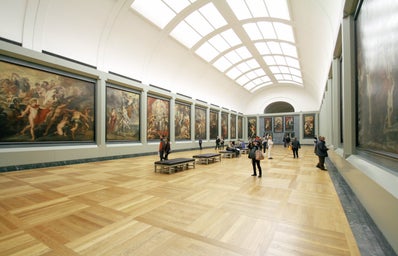This debate is one that is highly heated at the moment. With the rise of global warming, protests for urgent action against climate change are needed. However, should these protests affect works of art? Or do they actually add a layer of meaning to the artwork’s history and significance?
With the constant increase of living costs and the impacts of climate change, we are currently living in a highly tense world context which leads to upheaval and protest.
On the 14th of October, two “Just Stop Oil” climate activists threw tomato soup at Van Gogh’s famous Sunflowers painting in London’s National Gallery, protesting against the use of fossil fuels. The two activists then proceeded to glue their hands to the wall, and one of them shouted out: “What is worth more? Art or life? Are you more concerned with the protection of a painting than the protection of the planet and people?”. “Just Stop Oil” is a group of activists protesting against the UK’s use of fossil fuels. In their own words, they want to “ensure that the government commits to ending all new licenses and consents for the exploration, development and production of fossil fuels in the UK”.
But why have they done this? Couldn’t we ask ourselves before judging the vandalism straight away why they have to such lengths for their voices to be heard? This action in itself stresses the urgency of the climate situation and the lack of government response. Extreme measures such as these also help emphasise the struggle that activists currently have to undergo to create change and be heard. According to the “Just Stop Oil” activists, they were aware that a glass frame protected the painting. Similarly, only nine days after the incident in the National Gallery, two “Letzte Generation ” activists threw mashed potatoes at Monet’s Les Meules painting in Potsdam, Germany. Like Van Gogh’s Sunflowers, the painting was protected by glass. According to the environmental group’s twitter, the activists claimed: “People are starving, people are freezing, people are dying”. As the activist said many people are unable to even heat up soup. The oil and fuel price crisis is leading to an increase in those struggling to survive.
I was a museum attendant for the past two summers, so I have been trained to be highly protective of the artworks I am supervising and thus of artworks in general and in making sure that comes too close and risks damaging it. I have therefore come to truly appreciate the value and see the fragility of artworks. However, protest is different to a child touching a painting and the intent is different. Many people say that this distracts from the actual meaning of the protests into something more negative and polemic. However, art vandalism has actually been around for more than a century now. More than a hundred years ago the suffragette Mary Richardson slashed the Velazquez’ Rokeby Venus painting also in London’s National Gallery. It is highly interesting to see how art in itself is often a protest against injustices and the artwork in itself becomes a symbol of other protests and is used for different meanings. An example of this is also the famous 1937 Guernica oil painting by Pablo Picasso. The painting’s reproduction at the United Nations of America is crucial in revealing how it has become a worldwide symbol of peace. Picasso’s oil painting is a symbolic image in its use in various anti-war and anti-imperialist protests and discourses. It is fascinating how artworks take on different meanings as time goes on.
Therefore, we can ask ourselves whether it is right to attack art if it is protected or whether another way is preferable. In the end, whether we like it or not, this is an impactful action that stuns the general public and makes us talk about the matter at hand. Although there was no damage done to the paintings, many argue that this distracts from the main message. But when everything else fails to make change and attract attention, is this not justified due to inaction? What if the future generations don’t even survive to perceive the art we have made due to our inaction?


